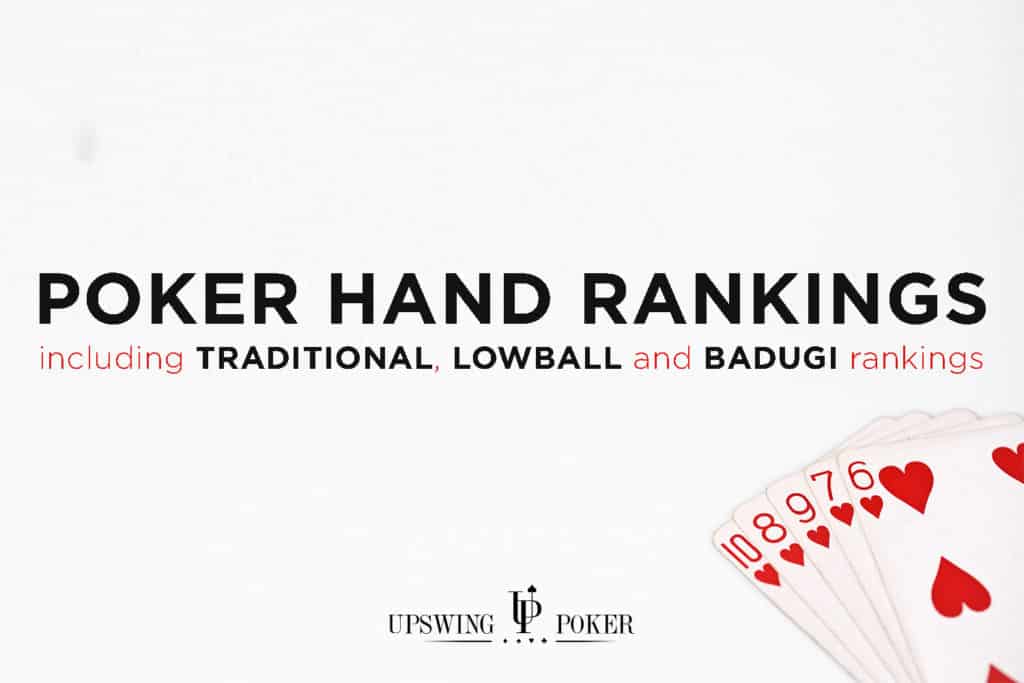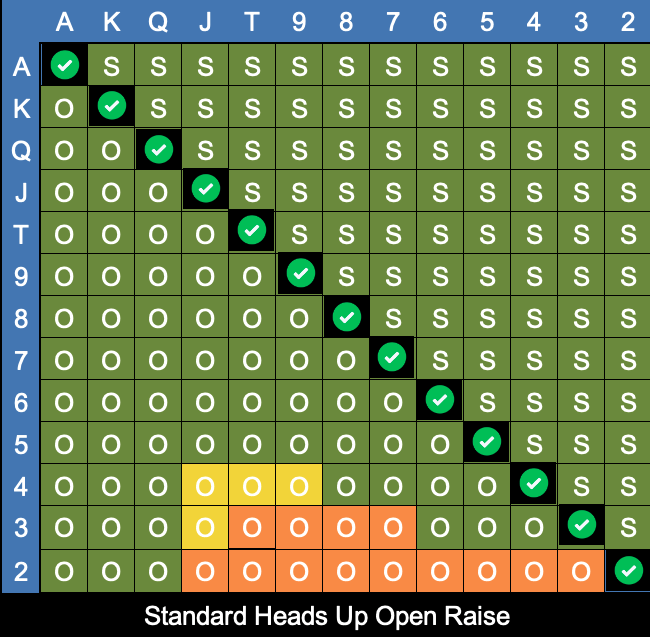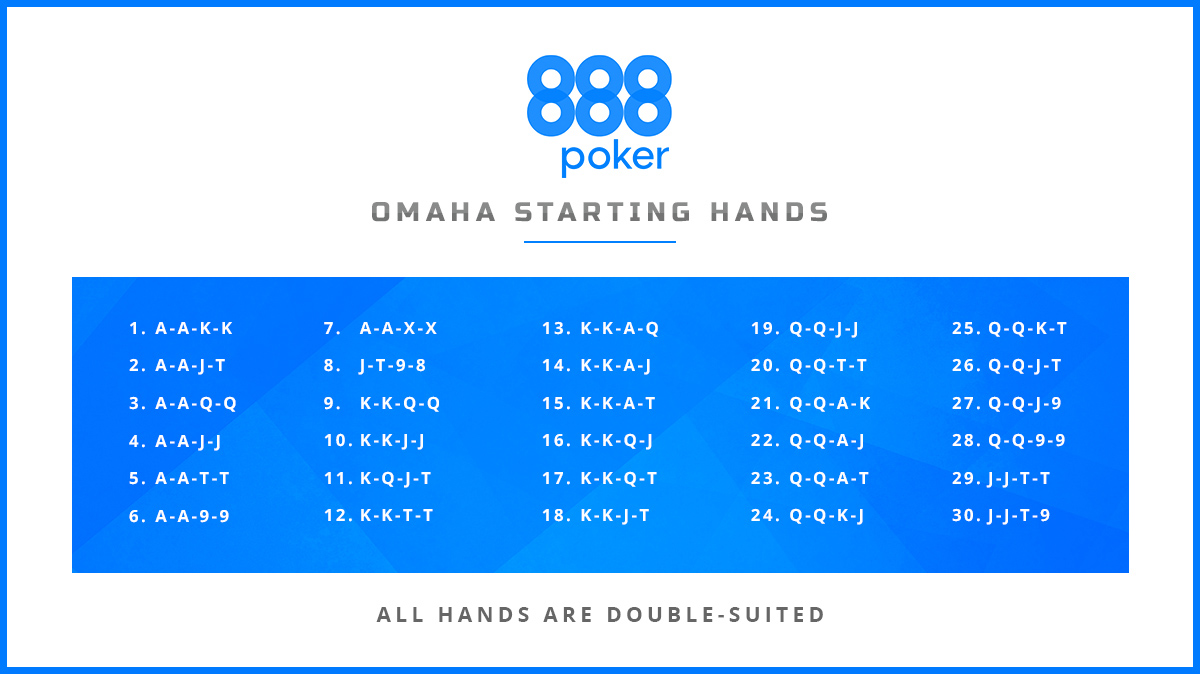Top 20 Starting Hands In Texas Holdem
The Strongest Poker Hands – Before and After the Flop

Probability of being dealt a certain starting hand. There are a total of exactly 1,326 different starting hand combinations in Texas Hold’em poker. However, many of them are practically identical, e.g. A ♥ K ♣ is exactly the same hand as A ♦ K ♠ before the flop. If you group these identical hands together, you get 169 different. October 23rd, 2020 10:53. One of the best ways to become a successful Texas Hold’em player is to know which starting hands to play and which to fold. In this blog, we bring you the best starting hands in Texas Holdem poker to help you improve your game.
Before the flop is dealt, the strongest hands are easy to spot. Aces, Kings and Queens top the list – with Ace-King not far behind.
The relative strength of poker hands in Texas Hold’em changes as the community cards are dealt. While all sorts of starting hands can hit the flop, there are certain categories which are more likely to turn into hidden monsters.
This page covers the top 10 poker hands, before the flop – and then all the way to the river. This includes:
- Starting Hands: Top 10 hands that every play would love to be dealt before the flop
- Flop Betting: How the first 3 community cards have a huge effect on the ‘relative’ strength of the bet pre-flop hands.
- Turn and River: Draws can complete, or high cards can hit as the community card board is completed.
- Top Hands and Position: Why being dealt a top 10 poker hand alone is not enough to win big.
- How to Tell: If you can spot those times an opponent has a monster hand, you’ll be in a great position top get away from 2nd best holdings.
Starting Hands: The Top 10 Hands Before the Flop
Pocket Aces rule the rankings before the flop. If you are dealt this hand, you’ll win 80% of the time against any single hand your opponent could hold by the river.
Here are the top 10 hands pre-flop in Texas Hold’em:
- Pocket Aces: There is no better feeling in Hold’em than looking down at a pair of aces. Especially if there has been a raise ahead of you.
- Pocket Kings: With aces so rare, it is usual to assume that your pocket kings are the best hand pre-flop. You can always reassess if you face multiple re-raises. With no aces on the flop, you can hope to win a big pot with this hand.
- Pocket Queens: There is a risk that opponents have aces, kings or ace-king when you are dealt Queens. With no ‘card removal’ for those hands as when you are dealt A-A or K-K. Pocket Queens is still a very strong hand and should be played for a raise.
- Ace-King: This hand is even stronger when suited, though plenty strong enough with just the high card value. If you make a pair on the flop, you will have the top kicker to go with your top-pair.
- Pocket Jacks: As you get down the rankings, even strong starting hands start to become vulnerable to over-cards on the flop. Jacks are often good enough to win unimproved, though you need to be cautious when an ace hits the board.
- Ace-Queen: Again, a suited version is much stronger than an unsuited one – as you’ll be able to make the nut flush on occasion. This hand becomes stronger if your opponents are prone to overplaying aces with weaker kickers.
- Pocket 10’s: This is the last pocket pair which is more likely than not to be an over-pair on the flop. It has hidden value, blocking straights and allowing you to hit a set (as with all smaller pairs) on boards which look ‘safe’ for the higher pairs.
- King Queen Suited: This hand has a lot of potential multi-way. Heads up against one of the premium hands, it does not do as well. If you find yourself with king-queen suited in position in a multi-way pot, you can often make a hidden monster and win a big pot.
- Ace-Jack / Ace-Ten: These hands are vulnerable, though suited versions can make the nut flush, if you don’t make 2 pairs, there is always a chance of a Broadway straight.
- Mid-Pairs: Finally, mid-pairs can make sets – giving them a lot of deceptive strength. When someone has aces, and bets strongly, you can often win their whole stack with a hidden pair or 7’s (for example).
Relative Strength of Poker Hands on Different Flops
Key to success in poker is not to get married to the top 10 starting hands after the flop. There are several factors to consider. While you can often assume that your premium starting hand is still best (and bet it accordingly), a clear assessment of the risks is always useful.
Top 20 Starting Hands In Texas Holdem
When you see a flop, think about the following:

- How many opponents saw this flop (what is the risk that some random hand connected!)?
- Does this flop have the potential to hit many drawing hands (straights and flushes)?
- Is this the type of flop that will not connect with hands my (tight) opponents are likely to play (low, unconnected flops fit this category)?
- Are there cards on the board which are higher than my pocket pair?
These questions highlight an error that many new players make with premium hands. If you limp or call, instead of raising with those aces – you can end up in a tricky spot. You could see a wet flop (lots of potential draws available) with multiple opponents who might have random holdings. If you have to act first in the betting, the situation looks even trickier. Here your hand is too strong to give up on, though if you get a lot of action on subsequent betting rounds, you could be in trouble!
Playing good hands strongly, and raising a few outside the top 5 for balance, is a great way to avoid too many tough spots on the flop.
Turn and River Cards: How Likely my Opponent Hit?
When the turn or river card completes a flush (for example) and your opponent comes out firing with a big bet, you need to ask yourself how often you are beaten.
The wrong question to ask here is ‘how often do players make flushes by the river?’. You have some additional information. If your opponent called a bet on the flop, or even raised, then they are likely to have some kind of hand. If they continued all the way, only to re-raise you at the end when their card hit – you might just be in trouble.
Getting ‘married’ to over-pairs can be expensive in these situations. What is demonstrates is that even the top 10 starting hands can be losers in certain run-outs. You’ll need to use your judgement to decide whether your opponent might be bluffing in the scenario above. This can be based on the player, their bet sizing in the hand and your history with that opponent. In my experience, players at the smallest stakes are not bluffing frequently enough in this type of spot to make this a profitable call.
Playing the Top 10 Poker Starting Hands in Position
With the dynamics or poker hand strength changing as the community cards come out, playing in position is a great way to optimise your profits. This simply refers to acting last in the betting on the flop, turn and river betting rounds. The player with the ‘Dealer’ button position acts last – though keep in mind that acting last relative to the raiser pre-flop is a different factor.
When you are last to act, you can get away from hands when there is a raise and a re-raise ahead of you. It is always an option to bet out and steal a pot you might otherwise have given up on when everyone checks to you as well.
Position strategy goes a lot deeper than this. When you are starting out, keep in mind that acting last + having a top 10 poker hand is the best spot to be in!
How to Tell If Your Top Hand is Beaten?
As you gain experience playing on different board-textures, and against different types of opponents – spotting those times when your pocket aces are second best becomes a lot easier.
While some opponents keep betting at any pot where they have a piece of the board (or a draw in some cases), other opponents are more cautious. If someone who usually limps and calls suddenly wakes up with big bets, this is a great sign that you could be beaten. I have seen opponents play passively for hours, and suddenly check-raise when they made the top flush. If you pay those types off, it is down to you not paying attention – rather than bad luck.
One of hold’em’s most crucial decisions is, do I see the flop or don’t I see the flop? In this lesson we’ll examine the importance starting hand selection and what factors you need to consider before deciding whether to hold’em or fold’em.
There are 169 different two card starting hand combinations in hold’em poker. This number assumes, for the sake of argument, that is the same as , or any other suited combination. If you are not dealt a pair, then your starting hand will either be suited or unsuited, and either connected or unconnected (gapped). This means your starting hand will fall into one of the following five categories:
- Pairs – e.g. , ,
- Suited connectors – e.g. , ,
- Connecting cards – e.g. , ,
- Suited unconnected cards – e.g. , ,
- Unconnected cards – e.g. , ,
Unconnected cards might be one, two, three-gapped, or more. The bigger the gap, the less chance you have of hitting a straight. For example, if you hold 73, then you’d need a flop of 456 for the straight. But holding T8, you could flop a straight with 9JQ or 679.
The Best Starting Hands in Hold’em
Let’s start by talking about the best starting hands, which are often referred to as ‘premium hands’. There is some disagreement amongst poker players as to which starting hands are the best, but few would dispute the value of the first of our three main groups, Aces and Kings.
Group 1: AA, KK
These two starting hands are the major players in hold’em. It’s not often you’ll get dealt Aces or Kings. In fact you get either Aces or Kings once in every 110 hands, so it’s not nearly as often as we’d like. Aces are by far the best possible starting hand in hold’em, closely followed by Kings. However, you should be aware that even Aces or Kings can get cracked, and they don’t play too well against multiple opponents. This means you should definitely be raising pre-flop to narrow the field. Extra caution is necessary when playing Kings, because if an Ace falls on the flop then you’re losing to anyone who has a single Ace in their starting hand. While they are very strong hands which most players love to get, they are certainly not unbeatable.
Group 2: QQ, JJ, AKs
Queens and Jacks are great starting hands, and with either of these, you can usually be confident you have the best starting hand. Of course they are dominated by Aces and Kings, but they’re a favourite against all other starting hands. While Queens and Jacks will occasionally run into a player holding either Aces or Kings, it doesn’t happen too often. Play these cards strongly, and always look to raise with them.
Ace-King is known throughout the poker world as Big Slick, and when suited it’s often called Super Slick. While it isn’t a ‘made hand’, unlike a pair, it offers great potential. It’s only a big underdog to Aces and Kings, and even pairs like Queens and Jacks are only slight favourites. The beauty of AK (suited or unsuited), is that it dominates so many other hands like AQ, AJ, AT, and so on. These types of hands are the ones that players usually end up pushing all-in with late in a tournament.
Group 3: TT, AK, AQs, AJs, KQs
This next group of starting hands is also a strong bunch. You should definitely be looking to raise pre-flop with any of these hands too. We’ve already talked about the power of AK, but starting hands like AQs, and AJs, are also very strong and often run into weaker Ace-X combinations. Even though these are all strong starting hands, and most of the time you’ll be winning pre-flop, you have to be careful – particularly a hand like KQs, which you can easily fold to a re-raise.
Suited Cards
You’ll often hear novice players responding to questioning of why they played a particular starting hand with the line “well, because they were suited”. Some suited cards are worth playing and it’s certainly better to start with suited cards than unsuited cards. However, the odds of flopping a flush is 1 out of 118 hands (0.8%) with two suited cards, and you’ll only make a flush after the river around 6.5% of the time. Don’t fall into the trap of playing any two cards just because they happen to be suited – it doesn’t make a big enough difference to make junk hands valuable.
Kicker Issues
The word ‘kicker’ means the smaller of your two cards. Some players play a hand if it contains an Ace with any other card (such as an Ace with a 3 kicker), and this type of play ultimately cost players money and tournaments. For example, let’s suppose a player calls with A6 and the flop comes A83. What does the player do? bet? call? raise? call a big raise? go all-in? What if the flop comes Q63? The player has middle pair – which is very hard to play. Hey, the flop could come A6X – the player has two pair, Aces and sixes but this happens only 1 out of 49 hands (2%). Until you learn when and how to play Ace junk (AX) go slow with it. One good thing about A junk and K junk, is that you do not need to play these hands to learn when they may be profitable. Let experience from other hands and study be your teacher.
Table Conditions

Hold’em starting hands can be a complex subject because every situation is different. If you were to ask a professional poker player, “should I call, raise, or fold this hand pre-flop?” his response would almost certainly be “it depends!” Here are some of the main reasons why it depends:
The Number of Players
The value of certain starting hands is very dependent upon the number of players at the table. Certain starting hands are always going to be under threat against a table of nine or ten players, but the value of these same hands increases when there are fewer players. A starting hand like KJ might be vulnerable against a full table of players, but is considered a strong hand if there are just a few other players.
Position
Your position on the poker table will be a major factor in deciding which starting hands you should play. The later your position in the betting order, the better – because you get to decide what to do after most of your opponents have acted. We’ll talk much more about the importance of position throughout our lessons on Pokerology, but as a first step please see our lesson on the value of position. Playing position can elude us at first because it is a part of poker that lends itself to be exploited through experience. However, you must quickly realize that your position at the table should heavily influence the choice of starting hands that you play. Until a player has a feel or grasp for positional play, just believe and follow some of the suggestions on the subject.
A Raised Pot
Whether or not a pot has been raised should be a very important factor in your decision to play a particular starting hand. Your selection of starting hands should change when the pot has been raised by a reasonable player. If there has been a raise and a re-raise before you’re due to act, then you should only consider playing with a very strong hand. Of course this will also depend on the personality types of the other players and whether the game is very loose or passive.
Starting Hand Charts
When you first start playing poker it can be helpful to use a starting hand chart as a point of reference. We’ve created a couple of starting hand charts that can be used by beginners. Please click on the following links to view these charts (they will open in a new window):
Each of these charts loads as a PDF, meaning they be viewed on screen, bookmarked or better still, can be printed and studied offline.
Beginners can treat starting hand charts as the gospel, but once you know enough about the game to recognize appropriate opportunities, you can deviate because your adjustment may represent a more profitable play. Our starting hand charts are a guide, not a set of intractable rules. There is no such thing as a perfect starting hand chart, because every game is different and there are many variables at work. Game texture and table conditions can’t be measured and included into a neat formula.
There are many factors that may encourage you to tighten or loosen your play from our guidelines. If you have a starting hand that’s not listed on the chart, then there’s a good reason – it should almost always be mucked. But as in all poker decisions the phrase, “It depends” comes to mind. However, before you decide to deviate from our guidelines, have a reason for taking such an action.


Conclusion
Don’t fall into the trap of playing any two cards. Most poker players want to play hands and as a beginner it’s very easy to be seduced by suited cards or picture cards, or any two-card holding that contains an Ace of a King – but if you play hold’em correctly, you’re going to be selective and toss away the vast majority of hands you’re dealt.
When you gain more poker playing experience you can begin to open up your range of starting hands – but until then, proceed with caution and only play the best hands. Loose, promiscuous play will get you into trouble and is the downfall of many players.
In future lessons we’ll expand much more on the topics discussed in this poker lesson and get you to think beyond the actual cards you’re dealt. We also have hours of video footage covering starting hand selection for both no-limit and fixed-limit hold’em – so depending upon your preference, be sure to check them out!
Top 20 Starting Hands In Texas Hold'em
Related Lessons
By David Sasseman
David lives in Atlanta, Georgia, and has played over a million hands online and many thousands of hands in Mississippi, Louisiana, Florida, Illinois, Indiana, and Las Vegas casinos.